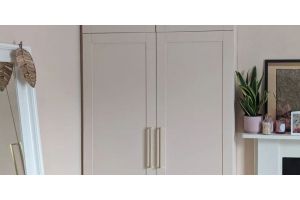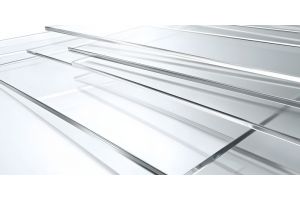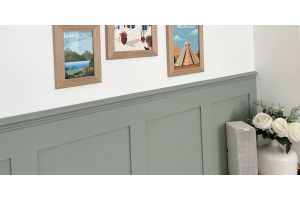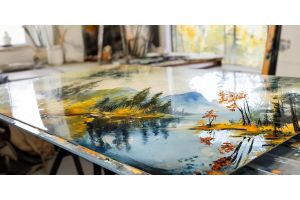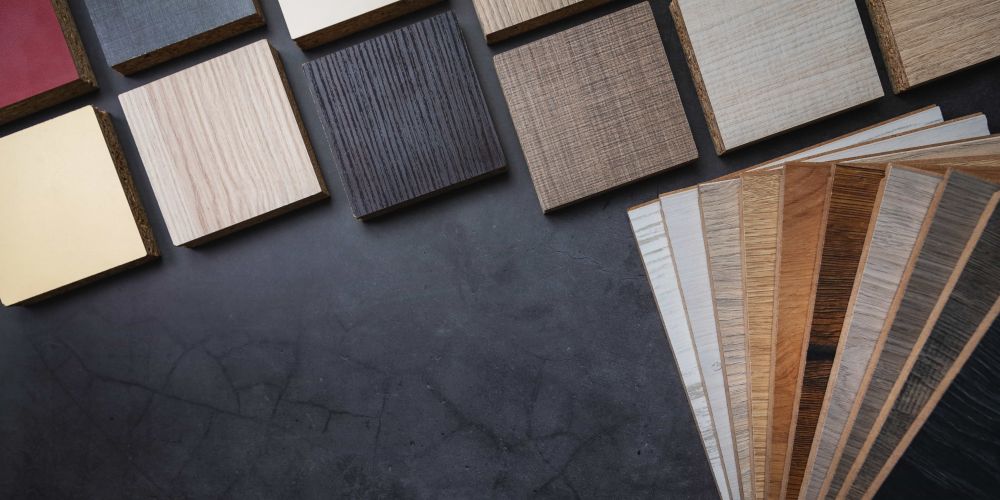
When it comes to sheet materials for DIY projects, furniture building, and cabinetry, two popular options are MFC and MDF. While both materials share similarities, they have distinct characteristics that make them suitable for different applications. In this article, we'll explore the differences between MFC and MDF to help you decide which one to choose for your specific project.
Key features
| Question | MDF | MFC |
|---|---|---|
| What is it made of? | MDF, or medium-density fiberboard, is made from wood fibres combined with adhesive resins. The wood fibres are typically sourced from softwood or hardwood, and they are bonded together under high pressure and heat to form a dense and uniform panel. | MFC, or melamine-faced chipboard, is made from wood chips or particles that are bound together with adhesive resins. The surface of MFC is covered with a melamine resin-impregnated paper overlay, which provides a decorative finish and enhances its durability. |
| What are its strengths? | MDF is known for its uniform density and smooth surface, making it ideal for machining and finishing. It is dimensionally stable, resistant to warping and shrinking, and offers excellent screw-holding strength. MDF also provides a consistent surface for painting, laminating, and veneering. | MFC offers a cost-effective alternative to solid wood and other engineered wood products. It has a durable surface finish that is resistant to scratches, stains, and moisture. MFC panels are available in a wide range of colours and textures, allowing for versatile design options. Additionally, MFC is lightweight and easy to work with, making it suitable for a variety of furniture and interior applications. |
| What are some common uses? | MDF is commonly used in furniture manufacturing, cabinetry, shelving, moulding, and architectural applications. It is also used in construction for interior panelling, partitions, and decorative elements. Additionally, MDF is often used as a substrate for laminates, veneers, and paint finishes due to its smooth and uniform surface. | MFC is widely used in the production of furniture, such as desks, cabinet doors, wardrobes, and shelving boards. It is also used in the manufacturing of interior doors, wall panelling, store fixtures, and kitchen countertops. The decorative surface of MFC makes it suitable for residential, commercial, and institutional settings where both aesthetic appeal and durability are important. |
| Is it moisture resistant | MDF is susceptible to moisture and can swell or warp if exposed to water or high humidity for prolonged periods. However, moisture-resistant MDF, treated with special additives or coatings, is available for applications where moisture resistance is required. | MFC is more moisture-resistant than standard MDF due to its melamine resin overlay, which provides a protective barrier against moisture ingress. While not completely waterproof, MFC can withstand occasional spills and humid environments better than untreated MDF. |
| Can it be painted? | MDF provides a smooth and uniform surface that is suitable for painting. It accepts paint well and can be easily primed and painted to achieve desired colours and finishes. | MFC can be painted, but it may require surface preparation such as sanding and priming to ensure proper adhesion of the paint. Alternatively, MFC panels are available in pre-finished colours and textures, eliminating the need for painting. |
| Is it suitable for outdoor use? | MDF is not suitable for outdoor use as it is prone to moisture damage and can deteriorate when exposed to rain, sunlight, and temperature fluctuations. For outdoor applications, alternative materials such as exterior-grade plywood sheets or plastic composites are recommended. | MFC is not recommended for direct outdoor exposure due to its susceptibility to moisture and UV degradation. However, it can be used in covered outdoor areas or protected environments where it is shielded from direct sunlight and moisture exposure. |
What is MFC?
MFC is an engineered wood product made from wood particles or fibres that are bonded together with resin under high pressure and heat. The result is a dense, stable board that is then faced on one or both sides with a decorative melamine resin-infused paper. This paper coating provides a smooth, durable surface that is resistant to moisture, stains, and scratches.
Advantages of MFC:
- Durable and long-lasting
- Easy to clean and maintain
- Moisture and scratch-resistant
- Available in a wide range of wood grain and solid colour finishes
- Affordable alternative to solid wood or veneered surfaces
Disadvantages of MFC:
- Not as strong as solid wood or plywood
- Limited options for edge finishing (often requires edge banding)
- Not suitable for extensive machining or shaping
- Potential for delamination if exposed to excessive moisture
What is MDF?
MDF is an engineered wood product made from wood fibres that have been broken down and combined with wax and resin. The mixture is then pressed into panels under high temperatures and pressure, resulting in a dense, uniform material with a smooth surface and no visible knots or grain patterns.
Advantages of MFC:
- Affordable and cost-effective
- Consistent and uniform appearance
- Easy to cut, drill, and machine
- Takes paint and varnish well
- Stable and less prone to warping
Disadvantages of MFC:
- Not moisture-resistant (unless specifically treated)
- Heavier than other wood products
- Contains formaldehyde resins, which pose potential health concerns when being cut or machined
- Can sag over time, especially in horizontal applications
- Harder to stain or achieve a natural wood look
MFC vs. MDF: Which Should You Choose?
The choice between MFC and MDF ultimately depends on the specific requirements of your project and your personal preferences. Here are some general guidelines:
Choose MFC if:
- You need a durable, moisture-resistant surface for high-traffic areas like countertops or cabinets.
- You prefer the look of wood grain or solid colour finishes without the need for additional painting or staining.
- Edge finishing is important, as MFC can be easily edge-banded for a seamless look.
Choose MDF if:
- Your project requires extensive machining, such as routing or intricate shaping.
- You plan to paint or stain the surface, as MDF takes finishes well.
- Cost is a primary concern, as MDF is generally more affordable than MFC.
- Stability and resistance to warping are crucial, particularly for large, flat surfaces.
Ultimately, both MFC and MDF have their strengths and weaknesses, and the right choice will depend on your specific project requirements, budget, and personal preferences. If you're still not sure which is best for your material you can reach out to our expert team to find out more. Alternatively, we offer samples on all of our MFC and MDF products, so you can find the perfect sheet for your next project.


